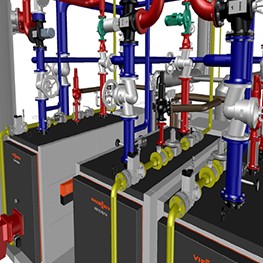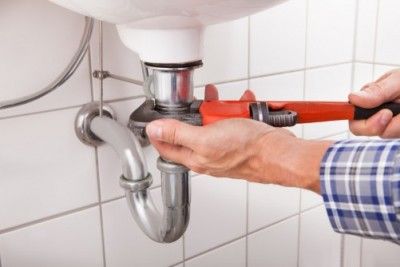How to Understand Your Home's Plumbing System Anatomy
How to Understand Your Home's Plumbing System Anatomy
Blog Article
The article author is making a few good annotation relating to The Inner Workings of Your Home's Plumbing as a whole in the content which follows.

Comprehending how your home's pipes system works is essential for every single property owner. From delivering tidy water for drinking, food preparation, and bathing to securely eliminating wastewater, a well-maintained pipes system is essential for your household's health and wellness and comfort. In this detailed guide, we'll discover the elaborate network that composes your home's plumbing and deal suggestions on upkeep, upgrades, and dealing with usual problems.
Intro
Your home's plumbing system is more than just a network of pipelines; it's a complex system that ensures you have access to tidy water and effective wastewater elimination. Knowing its elements and just how they collaborate can aid you avoid pricey repairs and make sure every little thing runs smoothly.
Standard Components of a Pipes System
Pipelines and Tubing
At the heart of your pipes system are the pipelines and tubing that bring water throughout your home. These can be constructed from various materials such as copper, PVC, or PEX, each with its benefits in terms of sturdiness and cost-effectiveness.
Fixtures: Sinks, Toilets, Showers, etc.
Components like sinks, commodes, showers, and bathtubs are where water is utilized in your house. Understanding how these components attach to the pipes system helps in identifying troubles and planning upgrades.
Valves and Shut-off Factors
Valves regulate the flow of water in your plumbing system. Shut-off shutoffs are critical during emergencies or when you need to make repair services, allowing you to isolate parts of the system without interfering with water flow to the whole home.
Water Supply System
Key Water Line
The major water line attaches your home to the community water or a private well. It's where water enters your home and is dispersed to different components.
Water Meter and Pressure Regulator
The water meter actions your water usage, while a pressure regulatory authority makes sure that water moves at a safe stress throughout your home's pipes system, stopping damages to pipes and fixtures.
Cold Water vs. Warm water Lines
Recognizing the distinction between cold water lines, which provide water straight from the main, and hot water lines, which bring warmed water from the hot water heater, helps in fixing and planning for upgrades.
Drain System
Drain Pipes Piping and Traps
Drain pipes lug wastewater far from sinks, showers, and toilets to the drain or sewage-disposal tank. Catches protect against sewer gases from entering your home and also catch debris that could cause clogs.
Ventilation Pipes
Ventilation pipes enable air right into the drain system, protecting against suction that can slow drainage and cause traps to vacant. Proper air flow is essential for maintaining the integrity of your pipes system.
Relevance of Proper Drain
Making certain proper drain stops back-ups and water damages. Regularly cleansing drains and keeping traps can protect against pricey repair work and expand the life of your plumbing system.
Water Furnace
Types of Hot Water Heater
Water heaters can be tankless or standard tank-style. Tankless heating units warmth water on demand, while containers save heated water for instant usage.
Updating Your Plumbing System
Reasons for Updating
Upgrading to water-efficient fixtures or changing old pipelines can improve water high quality, reduce water expenses, and boost the value of your home.
Modern Plumbing Technologies and Their Benefits
Explore technologies like clever leakage detectors, water-saving toilets, and energy-efficient water heaters that can save cash and reduce environmental impact.
Cost Considerations and ROI
Calculate the upfront costs versus long-lasting cost savings when thinking about plumbing upgrades. Several upgrades spend for themselves via minimized energy costs and less repair work.
How Water Heaters Attach to the Plumbing System
Comprehending how hot water heater link to both the cold water supply and hot water distribution lines aids in detecting problems like inadequate hot water or leaks.
Upkeep Tips for Water Heaters
Consistently purging your water heater to get rid of debris, checking the temperature setups, and checking for leaks can expand its lifespan and boost energy performance.
Common Pipes Issues
Leakages and Their Reasons
Leaks can take place because of maturing pipelines, loosened fittings, or high water stress. Dealing with leakages quickly stops water damage and mold and mildew development.
Blockages and Obstructions
Obstructions in drains and bathrooms are commonly caused by purging non-flushable things or a buildup of oil and hair. Making use of drain displays and bearing in mind what goes down your drains pipes can protect against clogs.
Signs of Plumbing Troubles to Watch For
Low tide pressure, sluggish drains pipes, foul odors, or unusually high water expenses are indications of possible plumbing issues that must be addressed quickly.
Pipes Maintenance Tips
Routine Examinations and Checks
Schedule yearly plumbing evaluations to catch concerns early. Seek signs of leaks, rust, or mineral accumulation in taps and showerheads.
Do It Yourself Upkeep Tasks
Simple tasks like cleansing faucet aerators, checking for toilet leaks using dye tablets, or protecting subjected pipelines in cool environments can prevent major plumbing issues.
When to Call a Professional Plumber
Know when a plumbing concern calls for specialist expertise. Attempting complex repairs without proper knowledge can result in more damage and higher repair expenses.
Tips for Reducing Water Usage
Simple behaviors like dealing with leakages immediately, taking much shorter showers, and running full tons of laundry and dishes can conserve water and reduced your energy expenses.
Eco-Friendly Plumbing Options
Take into consideration lasting pipes materials like bamboo for flooring, which is durable and environmentally friendly, or recycled glass for kitchen counters.
Emergency situation Readiness
Steps to Take During a Plumbing Emergency situation
Know where your shut-off shutoffs lie and exactly how to turn off the water supply in case of a ruptured pipe or major leak.
Significance of Having Emergency Calls Convenient
Maintain contact information for neighborhood plumbing technicians or emergency services conveniently offered for quick feedback throughout a pipes dilemma.
Environmental Influence and Preservation
Water-Saving Components and Devices
Setting up low-flow taps, showerheads, and toilets can dramatically minimize water usage without giving up performance.
DIY Emergency Situation Fixes (When Appropriate).
Momentary fixes like making use of air duct tape to patch a leaking pipeline or placing a pail under a dripping tap can reduce damages up until a professional plumbing technician arrives.
Verdict.
Comprehending the composition of your home's pipes system empowers you to preserve it effectively, conserving time and money on repair services. By following routine maintenance routines and remaining informed concerning modern pipes technologies, you can ensure your plumbing system runs successfully for years to find.
HOW YOUR PLUMBING SYSTEM WORKS
Which Pipes Do What?
Blue lines = fresh water supply entering the building Red lines = hot water supply entering the building Grey lines = pipes carrying waste away from the building and venting pipes carrying gases away from the building (through the roof) YOUR MAIN PLUMBING SYSTEMS
There are two main plumbing systems that support your home s basic plumbing needs one that brings clean water into your home, and one that sends dirty water away from your home. Connected to the toilet, bath, shower, and other faucets in your home, these two systems keep your water flowing in the right directions.
ACCESSING FRESH WATER
Fresh and clean water is brought into your home through the main water supply line . Filtered through one pipe, this water is pressured to flow into the various fixtures in your home at any given time.
This water can be sourced from a well located on your property, a pond or river (mostly cottages), or, as in most cases, from the city s municipal water treatment centre. However, it is important to note that water that is untreated, such as the water siphoned from ponds or rivers, may not be safe to drink. Personal water supplies always need to be treated for hardness and contaminants before consumed.
MUNICIPAL WATER SUPPLIES
Improve taste and odour Remove sediment Eliminate hardness Reduce chlorine COLD WATER SUPPLY VS. HOT WATER SUPPLY
Cold water flows into your home or building through the service line, which then distributes hot or cold water to your fixtures. This line is most commonly run through a central column that runs floor to floor. Hot water runs in short and straight pipes as the longer the pipeline, the more heat that will be lost in the transfer. Having shorter pipes also allows residents to access hot water more quickly.
WASTE WATER SYSTEM
Your wastewater system is divided into two parts pipes that send wastewater away from your home and venting pipes that send sewer gas away from your home. Sewage water travels through pipes that flush the water and waste towards local sewers that are operated and managed by your city or town. Most sewer systems rely on gravity to move the wastewater to where it needs to go.
The further away from your toilet or sink, the larger wastewater pipes become. This allows for waste to be disposed of from various parts of your home or business at once without pipe blockages. The angle and flow of these pipes are also essential for keeping your waste pipes clear of build up.
https://harrisplumbing.ca/how-your-home-plumbing-system-works/

Do you enjoy more info about Understanding Your Home's Plumbing Anatomy? Give feedback below. We would be delighted to hear your suggestions about this posting. We hope that you come back again in the near future. Do you know somebody who is fascinated about Plumbing Installation 101: All You Need to Know? Take a moment to share it. Thank-you for taking the time to read it.
Go Deal Now Report this page